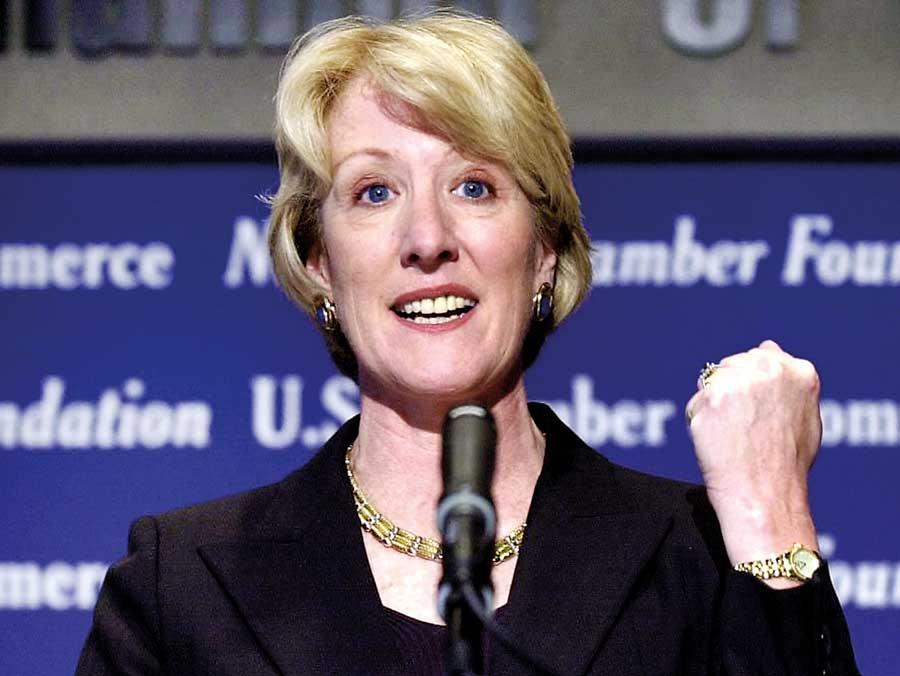04 Nov 2019 - {{hitsCtrl.values.hits}}

 Anne Mulcahy – former Chairperson and CEO of Xerox Corporation, was born in 1952, in New York, USA. She was the only daughter in her family and attended Catholic school as a child. She received a B.A. in English and Journalism from University in Tarrytown, New York.
Anne Mulcahy – former Chairperson and CEO of Xerox Corporation, was born in 1952, in New York, USA. She was the only daughter in her family and attended Catholic school as a child. She received a B.A. in English and Journalism from University in Tarrytown, New York.
After graduation in 1976, Mulcahy joined Xerox as a field sales representative and rose through the ranks as VP for Human Resources, Chief Staff Officer and finally Corporate Senior Vice President. She was selected by the board of directors on August 1, 2001 to be CEO and five months later, she became Chairperson.
Xerox had a long history. The world’s first plain paper photocopier, Xerox 914, was launched in 1959, replacing mimeographs, carbon-paper, Photostats and other early duplicating technologies. The machine, capable of copying a document in less than 30 seconds, was a huge success.
In the 1960s, Xerox technicians managed to link one photocopier to another by telephone; what was scanned on one machine was printed on the other, leading to the modern fax machine. In 1969, Xerox invented the laser printer.
By the 1990s, however, despite an impressive record in innovation, Xerox looked like a dying company: its core products faced fierce competition and the digital revolution suggested that the entire market for paper duplication and transmission would soon disappear. After an outside CEO failed to turn the company around, Mulcahy was given the momentous task.
“I never expected to be CEO of Xerox,” she told the Fortune magazine in 2003, with characteristic honesty.
“I was never groomed to be CEO of Xerox. It was a total surprise to everyone, including myself.”
Mulcahy knew Xerox intimately but even she was unprepared for the depth of its financial crisis. Taking over from CEO Richard Thoman, an IBM recruit, who lasted only 13 months in the top job, Mulcahy acknowledged her lack of financial expertise – most of her time at Xerox was in sales and upper management. She quickly enlisted the treasurer’s office to tutor her in the fine points of finance before meetings with the company’s bankers.
Her advisers urged her to declare bankruptcy in order to clear off Xerox’s US $ 18 billion in debt but Mulcahy resisted, telling them, “Bankruptcy is never a win.”
In fact, she concluded, using bankruptcy to escape from debt could make it much harder for Xerox to be a serious high-tech player in the future. Instead, she chose a much more difficult and risky goal – “restoring Xerox to a great company once again”.
To gain support from Xerox’s leadership team, she met personally with the top 100 executives. She let them know how dire the situation was and asked them if they were prepared to commit. A full 98 of the 100 executives decided to stay and the bulk of them are still with the company today.
Having spent her entire career at Xerox, Mulcahy believed deeply in Xerox’s values and its proud heritage of inventing plain paper copying. But she knew the company had grown sluggish and fat. Xerox had stayed with its traditional business model while the competitors like Ricoh and Canon captured huge chunks of its market share by being more innovative, more agile and more aggressive.
As CEO, Mulcahy did not become paralysed trying to assuage angry shareholders. Instead, she headed out to the field, where her first priority was to win over Xerox’s customers by focusing on their complaints.
She told her demoralised troops, “I will fly anywhere to save any customer for Xerox.”
On her visits, she got lots of advice. One major customer, worried about the company’s bloated bureaucracy, told her, “You’ve got to kill the Xerox culture.”
Never lacking in loyalty to Xerox, she shot back, “Now, I am the culture.”
Meanwhile, the drumbeats for bankruptcy steadily increased as the company reported significant losses, used up its entire US $ 7 billion line of credit and watched its credit ratings decline sharply. Making matters worse, the company was facing a massive investigation by the Securities and Exchange Commission (SEC) of its billing and accounting practices.
Mulcahy didn’t blink. She refused to cut back on research and development (R&D) or field sales, despite shareholder petitions to shut down all R&D. Instead, she attacked Xerox’s bloated infrastructure, sold off pieces of Fuji Xerox, the company’s crown jewel and farmed out manufacturing to Flextronics.
She reached a painful settlement with the SEC. Along the way, she had to eliminate 28,000 jobs and billions in expenses but she saved the company.
Looking back, Mulcahy said, “There were many near-death moments when we weren’t sure the company could get through the crisis. In those days we would do anything and I mean anything – to avoid bankruptcy.”
By 2007, Xerox has gone a long way to making its vision a reality. She has paid off the company’s entire debt (except for financed purchases), rebuilt its product line and technology base and installed a new management team.
She said, “Today, I feel a well-earned pride in staying true to my values and the company’s, rather than capitulating to Wall Street and the bankers.”
“Looking back, I’d say we’ve already accomplished about 80 percent of things we set out to do,” she added.
She was selected as ‘CEO of the Year 2008’ by the Chief Executive magazine. She announced her retirement as CEO on May 21, 2009, prior to the company’s annual shareholder meeting.
Mulcahy gave colleagues a vision of the future that they could believe in.
“When people ask me how we move things so quickly – in a couple of years, turn a company around – I don’t have to think about it,” she told a Society for Human Resource Management Strategy Conference in 2010.
“It was not brilliance or strategy or execution but the fact that our people believed. We aligned ourselves around goals and objectives. We had the power of the people behind us.”
She now fills her days in towns and villages through the world chairing the efforts of Save the Children. From Ethiopia to the Appalachian hamlets, Save the Children works for a vision of a world in which every child attains the right to survival, protection, development and participation.
What lessons can we learn from Anne Mulcahy?
(Lionel Wijesiri is a retired company director with over 30 years’ experience
in senior business management.
Presently he is a freelance journalist
and could be contactedon
[email protected])
15 Nov 2024 7 minute ago
15 Nov 2024 29 minute ago
15 Nov 2024 58 minute ago
15 Nov 2024 59 minute ago
15 Nov 2024 1 hours ago